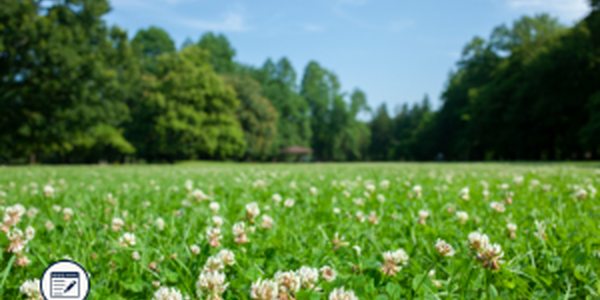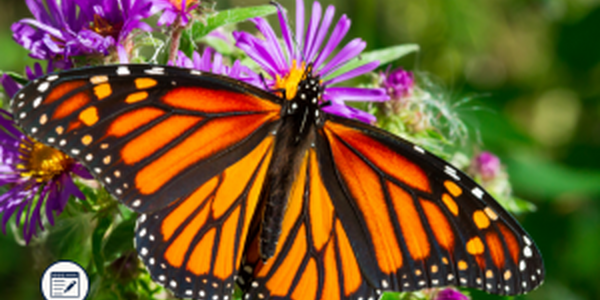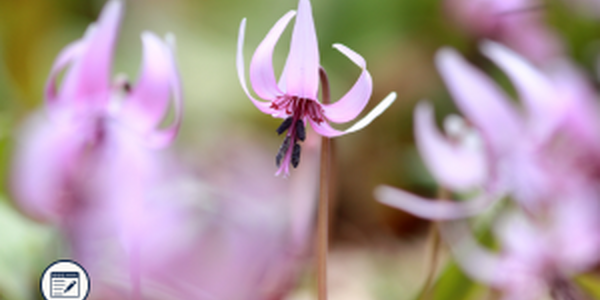Pollinators
With the decline of pollinators, our favorite foods, fibers, and medicines are in jeopardy.
One out of every three bites you take requires the work of a pollinator to produce the food we eat. Pollinators are also crucial for production of dyes, medicines and fibers, such as cotton. Pollinators also sustain plant communities by pollinating native plants that provide food, nesting and shelter for wildlife.
What is a pollinator?
Pollinators include butterflies, moths, beetles, hummingbirds, bats, flies, and wasps. In North America 99% of pollinators are insects, and of those, most are bees.
Ways you can help protect pollinators
Here are a few of the basics for a pollinator-friendly garden.
- Food for pollinators is generally provided by flower nectar and pollen; however, some pollinators such as butterflies need specific plants such as milkweeds for monarchs to serve as food for caterpillars. To attract particular pollinators conduct additional research to determine their needs during each of their life stages.
- Good pollinator plants include asters, beebalm, native roses, Joe Pye weed, purple coneflower, great blue lobelia, white indigo, lead plant, blazing stars, beard tongue, bellflowers, hollyhocks, monkshood, snapdragons, sunflowers, foxglove, mints, tomatoes, butterfly weed, goldenrod, larkspur, milkweeds, herbs, and many more flowers.
- When possible, choose native plants and not cultivars of native plants. Ornamental changes within cultivated plants may not provide the necessary attributes of a good pollinator flower. Exotic plants such as butterfly bush can provide food for bees and butterflies but cannot sustain the complete life cycle of pollinator insects. In addition native plants provide food for a greater diversity of pollinators.
- Plant masses of similar flowers and design areas to have flowers blooming all season. Aim for a variety of flowers blooming at once. Add easy-to-grow annual seeds such as zinnia and sunflower to existing perennial flower gardens to support flower diversity.
- Convert a section of your lawn to a “Pollinator Pocket”, a suggested planting plan developed by UI Extension educator, Master Gardeners and Master Naturalists. Designs developed for an approximately 5 foot by 5 foot space and include options for a variety of sun, shade and moisture conditions.
- Allow spaces between masses of flowers to provide shelter from wind and cold. Leave dead stems over the winter to provide shelter and nesting areas.
- Limit, or better yet, eliminate pesticide use. When using pesticides, check with your local UI Extension office for proper timing and least toxic options.
- When you purchase plants, ask the seller if the plants were treated with neonicotinoids, a class of chemicals known to negatively impact bees. Avoid plants exposed to neonicotinoids.
- If you are worried about luring something into your garden that can sting, keep in mind bees are not bullies looking for a fight. A happy bee is like a gardener in a garden center, focused on each flower.\
Learn more at Illinois Extension's Pollinator Pocket website.
Join University of Illinois Entomology Expert May Berenbaum for a fascinating look at the possibility of a pollinator apocalypse.
About the Expert
Dr. May Berenbaum has been on the faculty of the Department of Entomology at the University of Illinois at Urbana-Champaign since 1980; she has served as head of the department since 1992 and has held the Swanlund Chair of Entomology since 1996. Her research is focused on interactions between flowering plants and insects, ranging from pollinators to crop pests, and on the application of ecological principles toward sustainable management practices. A member of the National Academy of Sciences since 1994, she chaired the Committee on the Status of Pollinators in North America and testified before Congress on issues relating to honey bee health and pollinator decline. In addition to publishing more than 300 refereed scientific papers, she is devoted to public engagement in science and has authored numerous articles, as well as six books about insects for the general public (including a honey cookbook) and has founded several outreach and citizen-science activities, including Beespotter, and the UI Pollinatarium. In 2011 she received the Tyler Prize for Environmental Achievement and in 2014 she was presented with the National Medal of Science from President Barack Obama.



